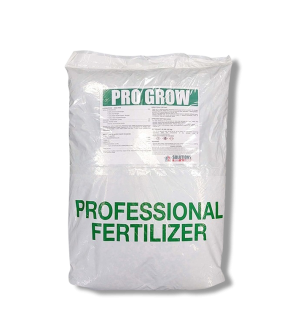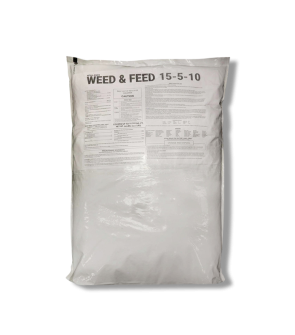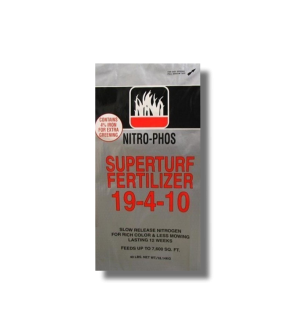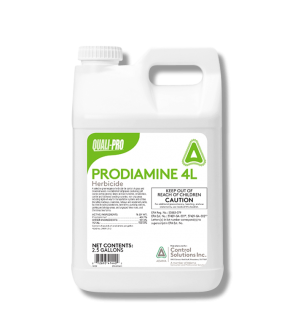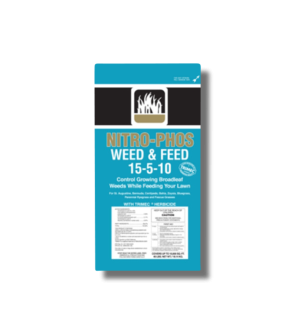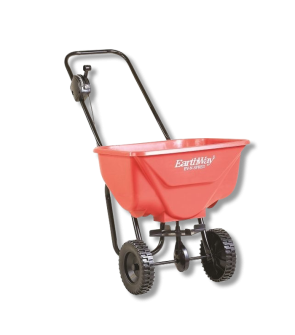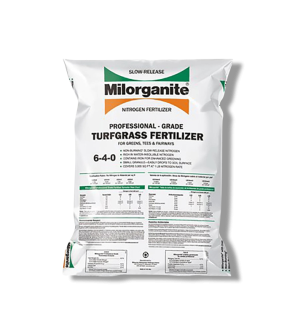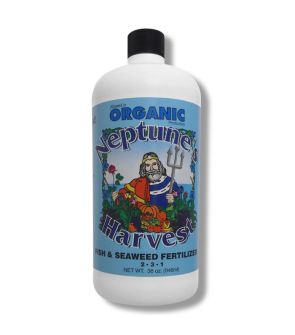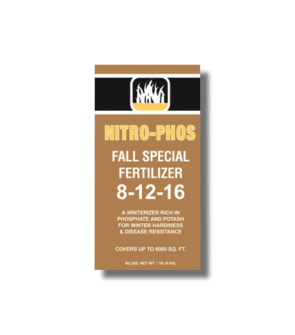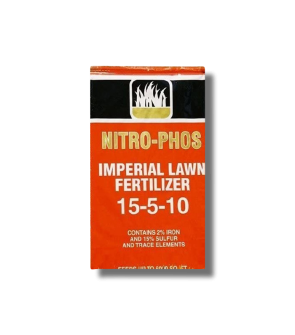Warm Season Turf Fertilizer Schedule
Most Effective Products
Warm Season Turf Fertilizer

This page is a general fertilizer schedule guide for warm-seasoned grass in the southern region of the United States. Using the products and methods suggested, you can get control of any warm-seasoned grass species. This article also gives additional information on the different species and specific treatment instructions and options. Follow this guide and the recommended products to ensure an successful fertilizer schedule for your warm-seasoned turf.
Keeping your lawn lush and healthy will require attention year-round. If you live in the southern half of the United States, then you are familiar with the hot and humid summers. Warm-seasoned grasses are originally from tropical areas, which is why they thrive in extreme heat and high temperatures of the southern regions of the United States. Warm-season grasses typically have deep extensive roots that help them to withstand drought better than cold-season grass. The most common types of warm-seasoned grasses are centipede grass, st. augustine, bermuda grass, and zoysia grass.
Warm-season grasses have the most active growth during warm seasons, from early spring to early fall. Their growth depends on the warm soil within southern climates. Some traits of the warm-season grasses are the thick and dense lawn coverage that remains green all summer long and will begin to turn brown in the wintertime. The grass will begin to green again when temperatures begin to rise. In general, warm-season grasses are green a little over half the year.
Since warm-seasoned grasses are typically growing in the spring to summer, it is best to begin fertilizing at this time. The primary reason it is important to fertilize at this time is during the late fall, when colder weather is beginning, the warm-seasoned grass will become dormant or hard to prepare for winter. In other words, warm-seasoned grass is not meant to be active during the wintertime.
The main benefit of fertilizing in early spring to late summer is you are providing a defense for your grass with better health, support against the cold, and less damage to your lawn and plants. If you do not begin earlier in the year, then the plants or turf will become soft and tender which will easily die against the first frost of winter.
Once your lawn is growing in the spring you can ease into an fertilizer schedule. At Solutions Pest and Lawn, our experienced lawn care experts can help guide or give you advice on fertilizers that can help you make the right decision in purchasing a product. For more information about what type of fertilizer to use and how to properly use it, get in touch with us via email or phone.
Our Recommendations
- Weed & Feed Fertilizer 15-5-10 with Trimec
How To Choose Fertilizer
Fertilizers provide a much-needed element for your ornament plants, crops, and turf that cannot be attained naturally through the soil. You may run across the term "npk" on fertilizers. NPK on fertilizers means there are three major elements acquired when using a fertilizer and that they are always in the order: nitrogen, potassium, and phosphorus. It may not always say npk on the description, but you will see a series of three numbers. These numbers represent the amount of nitrogen, phosphorous, and potassium used in the fertilizer. For example, for pro gro 19-4-10 fertilizer it has 14% nitrogen, 4% phosphorus, and 10% potassium.
To choose a fertilizer will depend on the current color of your grass, if there are any present weeds, and the current immune system of the turf. Depending on the nutrient needs of your turf will also tell you what type of fertilizer to buy. Remember, each type of grass has different levels of nutrients it must have.
What is the Grass Telling You?
Mother nature will always work to make your lawn green, whether it is normal colored turf, weeds, or funguses depends on the state of the grass. Look at the weeds in your lawn and they will tell you what your turf is trying to tell you. Weeds will always mean that either you soil is lacking nutrients, possible excess of fertilizer, your soil is not draining well, or that the soil could be too compact and not receiving enough oxygen. There are various treatments for each type of weed, specifying the type of weed control you need will help eliminate the weed faster and help to fertilize your warm-seasoned turf better.
If there are no visual issues such as color discoloration or any signs of weed, or if you are just not sure whether your soil is meeting your turfs nutritional needs then you can always go to your local agricultural department to test your soil and grass. Go to national pesticide information center to find your local testing center for plants and soil and remember to bring a sample of your grass/soil.
If you do not want to go to a local testing center, then you can apply a slow-release fertilizer, which is less likely to harm your plants, but will take the longest to see any changes to your turf.
Selecting The Best Fertilizer Based On Your Lawn
Fertilizers can be used in a variety of different ways on your lawn, gardens, and landscapes. Fertilizers comes as two forms liquid and granular. Your patience level is needed when applying a granular fertilizer because it is a slow-release. A slow release fertilizer will release nutrients slower into the soil, based on moisture and temperature. It can take about six weeks or up to two months to see any results, but treated plants will receive nutrients for a longer period of time. A slow release fertilizer is the best option to take for fertilizing your warm-seasoned grass due to its longer release of nutrients, more natural colored grass, and longer protection within your warm-seasoned turf.
If this slow treatment method is not your style, then you can go with liquid fertilizers. Liquid fertilizers are more synthetic in nutrients. This immediately makes your lawn green, gives plants an immediate boost of nutrients, and stimulates the turf to grow faster. However, this quick release fertilizer does not last very long and soon you will be needing to spend money again on another liquid fertilizer application.
User Guide
Tools Needed
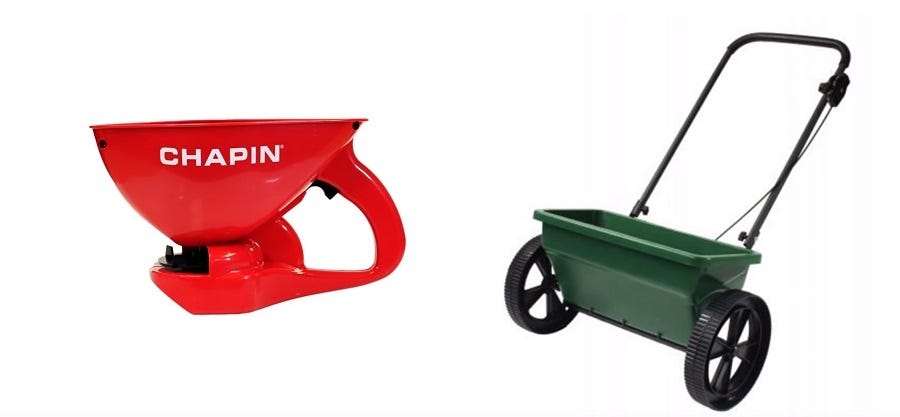
- Handheld spreader
- Broadcast spreader
- Walk-behind spreader
- Push broadcast spreader
- Drop spreader
Other Equipment
- Hose-end sprayer
- Wheelbarrow
- Rake
PPE-Personal Protective Equipment
- Chemical resistant gloves
- Mask
- Safety Glasses
- Closed toe shoes
Step 1: Water Your Turf From February to May

The best time to fertilize your warm-seasoned turf is on dry, humid days in the early to late spring. Before applying fertilizer, you should water your treatment area for a few days to help your soil accept the fertilizer faster. Do not apply so much water that the warm-seasoned turf is waterlogged.
Step 2: Fertilize your Warm-Season Grass from February to October

The best time to fertilize your lawn is during the spring, just as the grass is beginning to grow. If you apply fertilizer at the beginning of spring be aware that during this time the grass is putting energy into growing its roots. Applying fertilizer at this stage of development will promote over-fertilization giving your warm-seasoned turf uneven and long patches of grass.
When applying fertilizers you should do one application in the spring, one in the summer, and one in fall. Solutions 15-5-10 Weed & Feed Fertilizer with Trimec is our go to product for fertilization of warm-season grasses due it containing both a fertilizer and a pre-emergent herbicide. This product is a granulated fertilizer made with trimec that helps to control numerous types of weeds, such as dandelions and clovers.
Step 3: Calculate How Much Fertilizer to Use On Your Lawn

Determine how much Fertilizer you will need by first calculating the square footage of the area you wish to fertilize. To do this, measure (in feet) and multiply the area length times the width (length x width = square footage).
The label of the fertilizer you choose will give you the recommended application rate. Solutions 15-5-10 Weed & Feed Fertilizer, for instance, recommends applying 3.2 to 4.0 pounds of product per 1,000 square feet of turf grass. However, if your not sure how much fertilizer to apply, because your warm-season grass is lacking different levels of nutrients then calculate the percentage of nutrients needed.
To apply Solutions 15-5-10 Weed & Feed fertilizer based on nutrient level you will need to divide the percentage of that nutrient in decimal form. For example, in the Solutions 15-5-10 Weed & Feed fertilizer, to determine how much fertilizer is needed for 1 pound of nitrogen you will divide the 1 from the level of nitrogen in the fertilizer. In fertilizers it will always have three sets of numbers that represents the nitrogen, phosphorous, and potassium which represents the npk (nutrient) level in the fertilizer. So, you will take the 15 (convert to decimal form) in the weed & trimec fertilizer and divide it by 1 to determine how many pounds should be used per sq. ft (1 / 0.15 = 6.66 lbs). Therefore, apply 6.66 pounds of fertilizer per 1,000 sq. ft. to supply 1 pound of nitrogen (if that is the level of nutrient needed in the soil).
Step 4: Mowing your Lawn from March to July

During March, your noticing that your turf is starting to look a little overwhelming. Tall warm-season grass is great, but a bit of an eye sore as well. The height of warm-season grass and how frequently you mow will affect the turf's appearance. Mow your grass when it is three inches or higher. The biggest mistake when mowing is cutting grass when it is less than three inches. Warm-season grass stores its water at the base of its roots, so when you mow it tall it will be more tolerant to drought, require less mowing, and will have a darker green color.
Remember when using a fertilizer, weed killer, or insecticides on your turf to check the products label as some of these product directions require mowing to be completed before or after application. During spring when grass is actively growing mow once a week or when turf exceeds three inches. In the summer, warm-season grass is still present and thriving, but will not need as much mowing. If needed during the summer, mow once every two weeks or when the grass is higher than three inches. Warm-season grass will not require much mowing in the summer, because the turf is preparing to go to sleep for winter. So it is not growing as much and instead is storing any available nutrients for the upcoming cold season. During extreme dry conditions, you should raise your mower height at least to an inch to help not cut the grass roots storing water.
Things to Consider
Completing a fertilizer application schedule for your warm-season lawn will depend on following appropriate maintenance. The predicted time to see results is subject to change based on weather conditions and other environmental factors.
Before applying a liquid or granular fertilizer make sure to determine what type of grass you are applying to, the nutrient level within the soil or plant, and the time you have to follow these steps.
Key Takeaways
-
Solutions 15-5-10 Weed & Feed Fertilizer with Trimec can be a great product to improve the health and protection of your lawn against a wide variety of weeds.
-
Before application of fertilizer or herbicides you will need to check the product label to determine when to mow.
-
Pre-Emergent Herbicides works better when the entire lawn is covered with the selected herbicide product. This should be applied in early spring and sometime before December to allow warm-season grass to fight against weeds before they emerge.
-
To select a fertilizer, it is recommended to have the soil or plant tested to determine what nutrients are lacking in your turf.
-
-
-
-
-
-
-
Milorganite Pro 6-4-0$50.49 - $50.49
-
-
-

